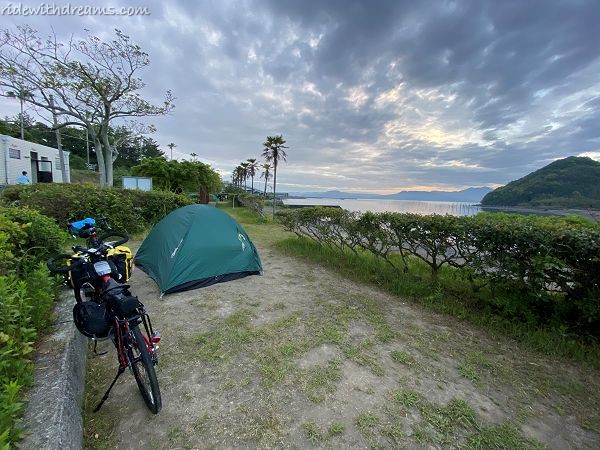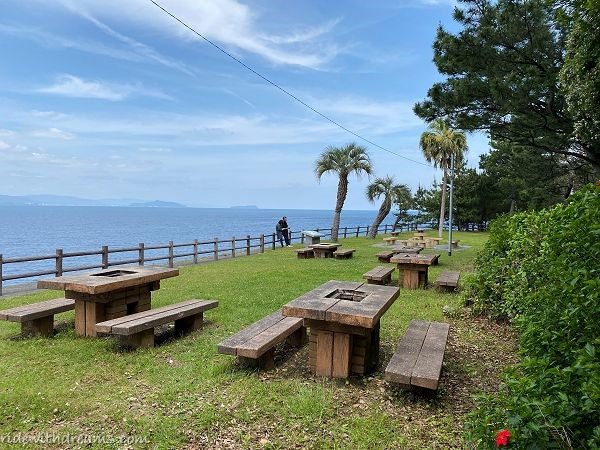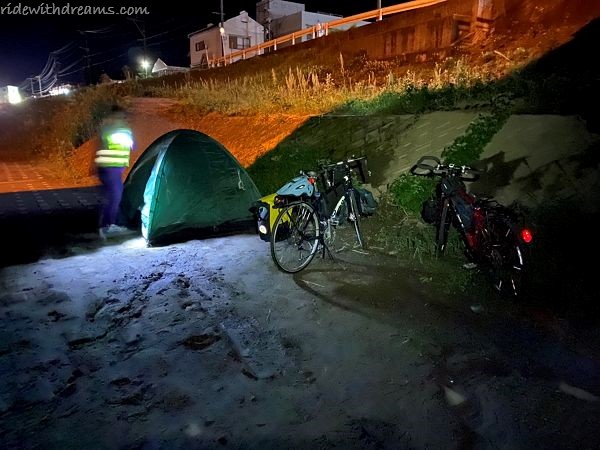Since all the borders were closed due to COVID-19, I have started my new adventures of bike touring and camping inside Japan, for the obvious advantages:
- Very low transportation costs
It costs almost nothing. except for a few unavoidable domestic flights/buses/trains/ships. Besides that, many public transportations allow the bikes for free, as long as they are packed in the carry bags.
- Very low accommodation cost
It costs next to nothing to camp, hence we can afford much more frequent and longer trips. Also, due to the lack of tourists and customers during this difficult time, we found some campaigns by government/prefectures/cities, or special discounts/good deals from hotels, we sometimes get discounts up to half price!
- Maximum Freedom
Without worrying about where to stay, or how to get there, we can go anywhere as long as there is a road! We have been to much more extensive/remote/interesting areas than where a car/train can bring us. It is eye-opening.
- Closer to the Nature
While sitting in an air-conditioned car, train or bus, I often have no memory of where I have been. During the transportation, I spent more of the time either sleeping or playing with phone, I did not even look out of the window or enjoyed the views.
However, when I was on the bicycle, I remembered every road, every turn. I felt the sun and wind on the skin, I enjoyed every downhill and appreciated all the scenery. I felt so much closer to the world, I even felt grateful for my health, which allows me to ride.
- Healthier, More Fun
It goes without saying that I enjoy cycling and moving my body. Although it is tiring and tough, especially in the hot summer or mountainous landscapes. At the end of the day, I always felt so happy that I did it. The sense of achievement is unbeatable. The meals taste much better, the baths feel much more refreshing, and I sleep much deeper.

It is not so difficult to find cheap or free campsites in Japan. In fact, there are so many, available in any prefectures, any areas. You can find them from internet or apps.
Most of them are surprisingly well-equipped, complete with free cooking areas, running tap water, toilets, washroom, sometimes even garbage dump! Also, they are usually very clean and neat, regularly maintained by either managers, or prefectures/cities.
Unfortunately, I do find the following problems in many campsites, make them difficult to use, thus low usage rates:
- Short Reception Hours, Complicated Paperwork and Procedures
Reservations are usually required for the campsites in Japan (except for some free campsites at very remote areas), which can only be made by phone calls. Reception/Check-in is usually required at their offices, which open at such limited hours, typically open at 8~10AM, close at 4~6PM. Only a few of them accept application by email in advance, most of them require you to fill in their application forms by paper in their offices.
All these rules may be no problem for people who travel by cars and have a fixed schedule, but it would be quite difficult for people who travel by bicycles / who arrive at late hours / who only decide their routes/destinations on that day etc.
It comes as a fact that “Auto-camp” and “Road Bikes” are much more popular than “Bike-packing” or “Bike-touring” in Japan. I guess many campsites only expect visitors come by car (or at least motorbikes). Also, road bike people would of course stay in hotels instead of campsites, in order to minimize their carryings.
However, in order to promote bicycles (reduce carbon emission!!) and attract tourists to remote areas of Japan, I think that government will put more afford to promote “digitalization” and “automation”, i.e. improve their homepages, to allow campsite reservation/reception/application/payment etc. to be done online.
- Inadequate Information on Internet/in English
There were uncountable times that I could only find information of a campsite in Japanese! When I found information of a campsite on a Prefecture/City homepage, and I click their “English” button, it would only lead me back to the coverpage of the city/prefecture!! I always wonder — Perhaps all these pages only target at Japanese/local people? Perhaps they do not want foreigners to use these campsites at all?
Anyway, many campsite’s homepages are only written in Japanese, so be ready to use Google Translation!
- Lack of Supporting Facilities
For those who have ever done bike-touring/camping before, you must know 3 or 4 Main Concerns during your touring:
- Power Supply
Power supply is actually not a big problem in Japan, because you can always carry a solar panel, or the fastest way is stop by a restaurant/any public facilities, anywhere you can find a wall outlet. If you ask, people are usually kind enough to let you charge your devices/power banks. Also, you can find “rental” power banks in many convenience stores.
- Foods
Foods are also not a problem. If you are riding on the road, you can usually find convenience stores, local supermarkets or stores once a while. Many local stores actually sell very cheap & delicious homemade lunchboxes or snacks! Inside national park/on islands there may be very few shops, that you should buy/carry some foods in advance Also, even though many campsites have reception offices/managers, very few of them sell foods,
Foods are also not a problem. If you are riding on the road, you can usually find convenience stores, local supermarkets or stores once a while. Many local stores actually sell very cheap & delicious homemade lunchboxes or snacks! Inside national park/on islands there may be very few shops. Also, even though many campsites have reception offices, very few of them sell foods. You should carry some emergency/dry foods in advance/just in case.
I hope that “food/drink vending machines” could be available at the campsites of remote areas.
- Shower
Shower is the main problem, because many campsites do not have shower. Occasionally, some campsites next to sea/beaches may have free cold water showers. Luckily, Sento (public bath) and Onsen (hotspring) are very popular in Japan. If you are at populated areas, you can usually find them, but you are unlikely to find them in some remote areas, such as mountainous roads.
I hope that there will be more “coin shower/cold water shower rooms” built in the public campsites or public facilities. That will be really helpful for the cyclists.
- Laundry
Laundry is another headache, because it is usually not allowed to do laundry (hand-wash the clothes) in the Sento and Onsen areas, out of manner, so we usually look for Coin Laundry Shops on the way.
How about Stealth Camping in Japan?
Officially, it is illegal to stealth camp in Japan, because all the land is usually owned by either someone or government, even a mountain or a forest. However, if you camp out/stay up late enough and pack up/wake up early enough, the following places are actually okay.
- Unmanned train stations/bus stations (indoor with toilets, so you only need a sleeping bag!!)
- Service areas (there are free large parking lots for trucks to rest, usually have at least toilets and vending machines)
- Parks (bigger parks usually have toilets, sometimes you can even find a roof, look for dark invisible corners to camp)
- Along the river banks or beaches (toilets may not be available, but you’ll have nice view and nobody to bother you)
- Under bridges, near convenience stores (under bridges so you can have roof and be invisible, near convenience stores so you can have toilet and sink to wash up and refill your water for free)
At last, I hope above information is helpful to you, or the camping facilities in Japan will improve overtime…






